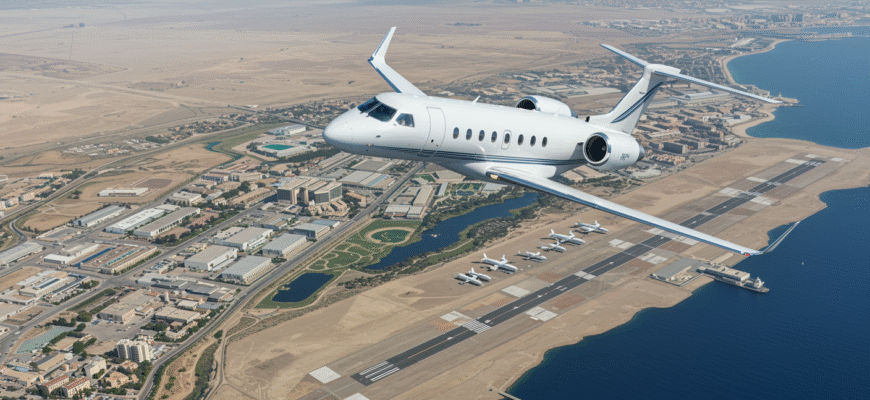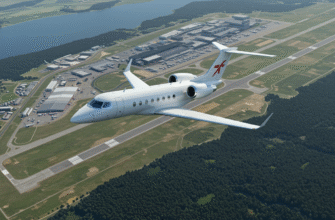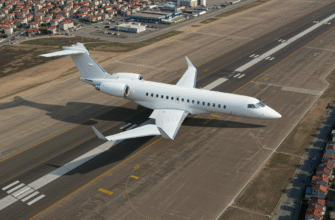For travelers landing in southern Spain, odds are high they’re stepping off the plane at Alicante–Elche Miguel Hernández Airport (ALC). Perched comfortably between the Mediterranean cities of Alicante and Elche, this airport has quietly evolved from a regional gateway into something much more powerful—a launchpad for European tourism and migration. From beachgoers flying in from grey-skied cities to Dutch retirees scouting out winter homes, this airport works overtime in ways most don’t realize.
Where It Is And Who Uses It
ALC sits just 9 kilometers outside Alicante and a short drive from Elche, making it the default arrival zone not just for those two cities, but across Costa Blanca, inland Murcia, and even parts of Castilla-La Mancha. And it’s not just Spaniards passing through—far from it. British travelers alone account for a giant slice of the airport’s foot traffic. In peak seasons, English can feel like the default language in the terminal.
Beyond the UK, it’s a revolving door of Dutch, German, Belgian, and Scandinavian tourists. Thanks to dirt-cheap budget airline routes and easy access to beaches, festivals, and retirement villas, the place pulses with international energy. Nearly 90% of flights are cross-border. That’s rare outside of a capital city hub.
Modern But Misunderstood
With over 18 million passengers in the most recent stats, ALC outperforms what many would expect from a non-capital airport. It ranks as Spain’s fifth-busiest, ahead of more talked-about spots like Valencia and not far behind titans like Madrid or Barcelona. What keeps it in this “underrated” category is probably the lack of international headlines or airport awards. But for regional travelers, ALC is a machine.
Compare that to Murcia-Corvera Airport—just an hour away. Despite major investment and a much newer layout, traffic at Corvera doesn’t come close. ALC holds loyalty among airlines and travelers alike, thanks to frequency, range of destinations, and fast ground transit. It’s the understated but essential backbone for half of southeastern Spain.
| Year | Passengers | Aircraft Movements |
|---|---|---|
| 2015 | 10,000,000+ | Not stated |
| 2019 | 15,047,840 | 101,408 |
| the current year | 18,300,000 (approx.) | Not stated |
Who’s Really Flying In And Out
Yes, there are plenty of flip-flops and straw hats in the terminal, but the range of flyers passing through ALC goes much deeper than your average beach-holiday crowd. Insurance groups and retirement villages book block flights during the off-season. Golf tourists flood in several months of the year looking for sun-kissed fairways. Mobile workers and remote digital nomads use ALC to bounce between countries while working from coworking hubs in Alicante or Benidorm. Students—from Erasmus programs or elsewhere—grab last-minute Air Europa or Ryanair deals to hop home between term breaks.
- Digital nomads hopping in for a few months on the coast
- Golf break vacationers headed to courses in Costa Blanca
- British retirees returning from winter stays in Torrevieja
- Spanish Erasmus students flying out for semester programs
- Group bookings for wedding parties and large family events
And let’s not forget the property buyers—especially from the UK and northern Europe—who treat weekend trips as house-hunting excursions south of Valencia. Their suitcases hold fewer swimsuits and more property brochures. If you ever find yourself behind a British traveler pulling a golf club case and browsing real estate listings in the seat pocket, it’s probably not their first ALC run.
The Story Behind The Airport’s Name
What started in 1967 as a modest civil terminal now ranks as one of Spain’s highest-traffic airports. It grew alongside the country’s late 20th century tourism boom. Regional airports rose like mushrooms across Spain, but few steered as much consistent international traffic as ALC. Major renovations kicked off in the 2010s, especially before the 2011 opening of its current terminal. Since then, the design has aged well—wide corridors, good signage, and seemingly endless rental car counters.
The “Miguel Hernández” part? That’s not just an add-on—it’s a cultural statement. In 2021, the Spanish government renamed it to honor the famed 20th-century poet from Orihuela, right in the surrounding province. Known for his political activism and tragic death in prison during Spain’s dictatorship, his verses are engraved in the region’s emotional DNA. ALC might be a modern hub filled with sliding doors and Starbucks, but its name nods to something deeper.
Why It Feels Like Britain South
You can hear it before you even reach baggage claim: familiar accents asking where the nearest taxi stand is. Flights connect ALC to more than a dozen UK cities—London (all major airports), Manchester, Birmingham, Bristol, Leeds, Newcastle, Glasgow, Belfast—the list reads like a who’s-who of British air traffic. For many UK-based families, Costa Blanca isn’t just a vacation spot; it’s a second life.
The pull is simple: sunshine, affordability, and routine. Brits who winter in Javea or Calpe joke that they know ALC staff better than their own local pub landlord. Some rotate short stays year-round between homes in Liverpool and Alicante. Their trips go like clockwork.
Others come twice a year—to defrost in February and chase summer sun in August. Golf groups arrive with kits and inside jokes. Then there are the newly retired—with plans to stay for months at a time, driving ALC’s long-term parking lot demand through the roof.
Unusual Facts & Airport Quirks Travelers Don’t Realize
Ever made it to your gate at Alicante–Elche Airport (ALC) sweating like it was cardio day? You’re not alone. The terminal stretches over 333,500 square meters—so huge you could practically train for a 10k inside. But here’s the twist: travelers often say it “feels empty.” That’s because one entire terminal (T1) has been closed since the sleek new one opened in 2011. It’s still there, lurking behind the scenes. Locals even joke it’s haunted, which makes it a magnet for urban legends and conspiracies.
Speaking of spooky, ask frequent flyers and they’ll drop rumors like breadcrumbs. From whispers of a “ghost runway” supposedly built over bad ground to talks of underground tunnels used by celebrities, ALC isn’t short on stories. No confirmed sightings of Ryan Reynolds being whisked through a secret door yet—but the myth lives on.
For avgeeks and window-seat junkies, landing at ALC is a visual treat. You’ll often descend over the Monforte del Cid hills or get that postcard glide alongside the Mediterranean next to Elche’s green belt. The final approach during golden hour? Chef’s kiss. It’s one of those landings where even seasoned travelers crack a window blind open. That moment when sea meets dust, and you realize Southern Spain isn’t just hot—it’s cinematic.
How ALC is Rewriting the Future of Regional Spanish Airports
When the pandemic grounded the world, many regional airports flatlined. Not ALC. While others crawled back, Alicante-Elche charged forward—reaching a staggering 18.3 million passengers in the current year alone. It’s back at 2019 levels and then some. And the boost? Thank Ryanair, Jet2, Wizz Air, easyJet. These aren’t just budget carriers—they’re the new lifelines for snowbirds, remote workers, and Brits chasing winter sun.
What’s next? ALC’s got big plans: expanded green spaces in terminal design, solar-powered upgrades and contingency prep for infrastructure strain. But not everyone’s on board. Local voices are raising the alarm around overtourism, especially in offbeat towns swamped by rental cars and beach towel colonies. Growth is great—until a village cafe can’t handle 200 English breakfasts in a day.
The ALC Traveler’s Cheat Sheet
Best time to fly? Think shoulder seasons. March to May or late September are prime—less crowd frenzy, more breathing room. Avoid mid-June (fever-pitch Bonfires festival in Alicante) and August (British invasion is real). Locals vacation then too, so services stretch thin.
Need food but don’t want airplane regret? Head past the main food court and veer left toward Burger King & Lizarran Tapas. Weird combo, but both get love from early flyers and crew. Pro tip: there’s a vending machine by Gate B24 that stocks surprisingly strong Spanish espresso pods. Game-changer on 6 AM flights.
- Security Line Tricks: Use the far-right lanes—less obvious, often faster.
- Lounge Hack: The Sala Ifach lounge near Gate C isn’t just for business class. Pre-book online and crash there with Wi-Fi, cava, and jamón.
- Charger Shortage? Sneak behind the Relay store across from Gate B19. There’s a quiet bench and three open outlets most travelers never spot.
Flying through ALC doesn’t have to feel like budget travel drama. Know the shortcuts and you’ll glide through it like you weren’t up at 4 AM catching a Ryanair flight to Leeds.









